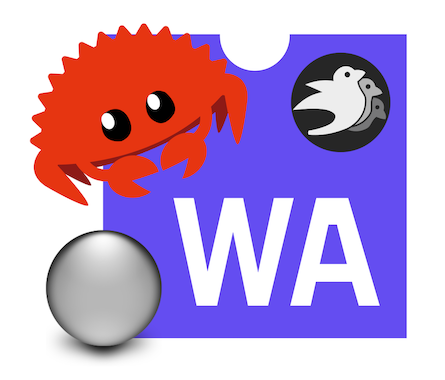This project is a proof of concept that aims to demonstrate how to code a video game in rust that compiles both to:
- a binary executable on OS desktop such as MacOS, Linux or Windows ...
- a web site, that you could access with any browser (via WebAssembly)
The web version is shipping with some features in addition, such as accelerometer support (if you load it on your smartphone 📱), which should integrate seemlessly into the rust source code.
In the last five years I've done a few projects involving rust and WebAssembly:
- topheman/webassembly-wasi-experiments: Discover WebAssembly System Interface (WASI) with C/Rust targetting NodeJS, python, Wasmtime and the browser
- topheman/rust-wasm-experiments: Discover how to use Rust to generate WebAssembly, called by JavaScript
Ten years ago, I made a small video game in JavaScript that you can play on your smartphone's browser: topheman/bombs which inspired this current project.
A Makefile is available with a list of tasks.
- node@>=18
- rust@>=1.67.0
# If you haven't yet, wasm support to your rust installation
rustup target install wasm32-unknown-unknown
# Mandatory crates
cargo install wasm-bindgen-cli@0.2.86 # cli for wasm-bindgen implementation shipped in Cargo.toml
cargo install wasm-opt # cli that optimizes wasm payload
# Optional crates for development
cargo install wasm-server-runner # https://github.com/jakobhellermann/wasm-server-runner
cargo install cargo-watch # https://github.com/watchexec/cargo-watch├── assets (contains the images/fonts used in the app)
├── dev.html (custom endpoint used for when running with wasm-server-runner)
├── src (source code of the rust application)
├── target
└── www (source code of the web part)
├── dist
├── global.js (bindings exposed to wasm-bindgen, used by both dev.html and www/index.html)
├── index.html (endpoint used in the final web server)
├── public
│ ├── assets -> ../../assets (symlink to the asset dir so that they will be picked by the bundler and expose to the browser)
cargo run
# `make desktop-dev` is an alias for 👆You can compile in watch mode, thanks to cargo-watch and bevy dynamic linking feature:
cargo watch -q -c -x 'run --features bevy/dynamic'
# `make desktop-dev-watch` is an alias for 👆The following will compile the project in WebAssembly and make it available at http://localhost:3000/dev.html
WASM_SERVER_RUNNER_ADDRESS=0.0.0.0:3000 cargo run --target wasm32-unknown-unknown
# `make wasm-dev` is an alias for 👆When you need to customize the html/js/css that will end up on the server, you will code in www.
The following code will compile the WebAssembly version, generate wasm glue code, build the www artefact and launch a server on http://localhost:3000
# compile WebAssembly version + generate wasm glue code + build the www artefact + launch a server
make www-build && make www-previewYou can launch a dev server for www:
make www-devSame as make www-build, but wasm-opt is run on the wasm payload to make it lighter.
make www-build-optI'm using github-actions for the CI and I deploy to vercel from there (can't use vercel for the whole pipeline since we need the rust toolchain with WebAssembly).
On each pull request:
- the project is compiled from rust to WebAssembly
- the WebAssembly output goes through
wasm-bindgenwhich generates the glue code between wasm and JavaScript (it also goes throughwasm-optto optimize the size of the wasm file) - the output from the previous step is fed up to the vite pipeline which generates a static site
- finally, the website is automatically published to vercel
- a comment is left on the PR with the generated url of the deployment
Acceleremeter only works on secure origins, so when you will try to access the app on your smartphone via your local ip (like 192.168.1.1), it won't work, since the domain will be recognized as unsecure.
You'll need to tunnel the app with a utility like localhost.run or ngrok that will open an ssh tunnel and forward traffic on https. Please run the following one time:
make forward # with ngrok
make forward-fallback # with localhost.runThe public https temporary address will be outputted on your terminal (keep in mind you won't access your website through your local network but through the internet, which can take longer - use that only to test accelerometer on mobile devices).
assets/ball-steel-no-shadow.png: https://github.com/topheman/gopher-ball/tree/master/assets/imgsassets/impactMetal_heavy_004.ogg: https://www.kenney.nl/assets/impact-soundsassets/impactPlate_medium_000.ogg: https://www.kenney.nl/assets/impact-soundsassets/ThaleahFat.ttf: https://tinyworlds.itch.io/free-pixel-font-thaleahassets/m6x11.ttf: https://managore.itch.io/m6x11

